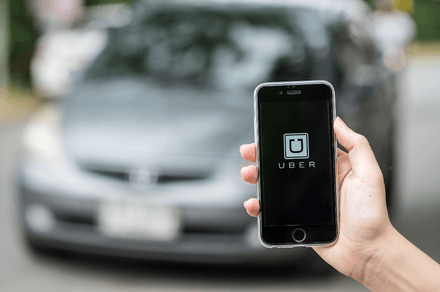While it might seem like a mindless convenience to grab an Uber or Lyft straight from your smartphone to get to your next obligation, the two ridesharing companies are actually at odds and locked into an ugly clash with regulators in metropolitan areas. More specifically, in New York City, city regulators just placed a cap on how many operational licenses it grants for potential Uber and Lyft drivers, mainly in an effort to save the city’s integral Yellow Cab system.
Taxicab liveries and Uber and Lyft rideshares are at odds because Uber and Lyft have long threatened the taxicab companies for stealing their business. It’s resulted in controversy that has even led to some to engage in physical altercations with each other as drivers fight for their own share of fares.
The threat has many worried after some taxicab drivers even committed suicide for the financial burden from the onslaught of overwhelming competition from Uber and Lyft.
To try and keep the playing field level in such a highly competitive market for individual cabs and drivers, New York City Council voted to cap the number of licenses available for ridesharing services for one year.
It’s the first major blow to one of the major ridesharing companies that have ultimately relied on the largest U.S. metropolitan city as its main source of business. It’s also the first major U.S. city to place such a cap.
Worawee Meepian
“The city’s 12-month pause on new vehicle licenses will threaten one of the few reliable transportation options while doing nothing to fix the subways or ease congestion,” Uber said in a statement.
“These sweeping cuts to transportation will bring New Yorkers back to an era of struggling to get a ride, particularly for communities of color and in the outer boroughs,” Lyft said in its statement.
The policy wasn’t met without controversy, obviously from the ridesharing companies. But the city continued to support its decision, saying it will not only help the dwindling taxicab industry, it will also aid in reducing traffic congestion and could potentially hike driver paychecks on both sides from a possible hike in fees for riders. In July, Uber sent an email to its 5 million subscribers in New York to notify them that riders could face rate hikes, longer wait times, and increased difficulty searching for service to the city’s outer suburban areas.
According to the New York Taxi Workers Alliance, the explosive growth from Uber and Lyft completely overturned the morale of taxicab drivers, leading to as many as six taxicab drivers committing suicide over the past several months from a seriously uncertain financial future — especially when you consider the costs of just even obtaining a medallion (license to operate a taxicab) in New York City.
Reuters reports the number of ridesharing vehicles skyrocketed from 12,600 in 2015 to about 80,000 this year. The New York City Taxi and Limousine Commission report that there are 14,000 yellow cabs in service throughout the metro area.
Although this particular cap only applies to the New York City metro area, New York isn’t the only city experiencing this clash between government-sanctioned taxicab and livery services and private ridesharing programs. Other cities abroad have seen strikes and even violent riots between taxicab drivers and ridesharing drivers competing over fares. And we’re certain this probably won’t be the last of such decision among governmental bodies of major metro cities as ridesharing continues to grow at rapid rates.
Editors’ Recommendations
- Could fleets of self-driving cars become a public health concern?
- Uber gears up for its latest scheme in the tricky Japanese market
- Now you have less of an excuse to not tip your Uber driver with in-app tipping
- The best ridesharing apps
- Uber vs. Lyft: Which ridesharing app goes the distance?

